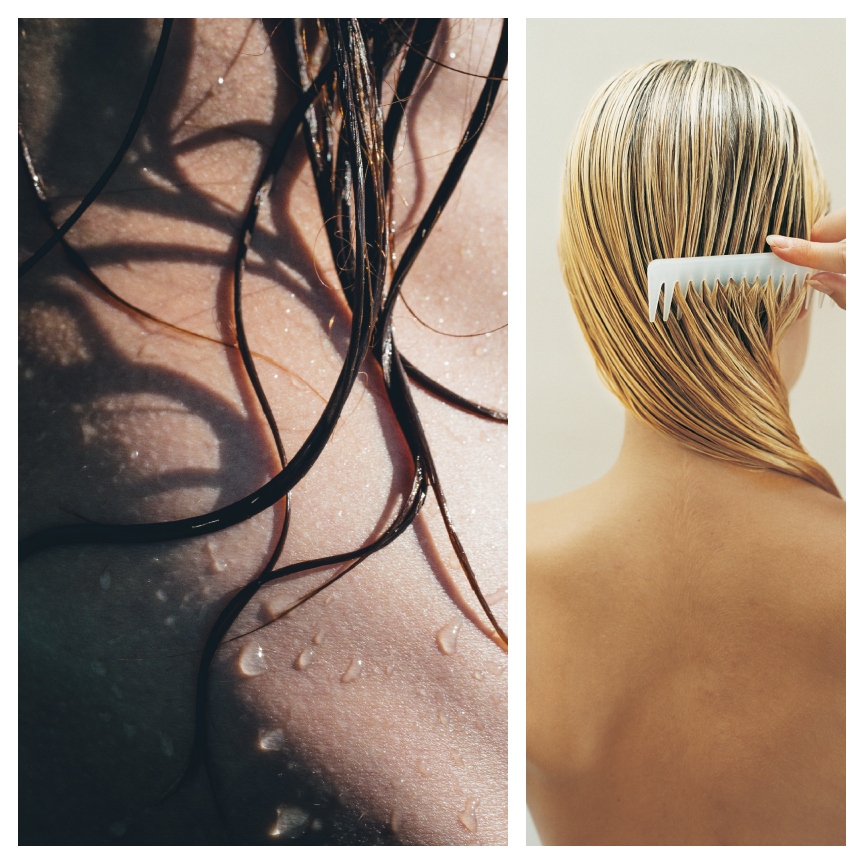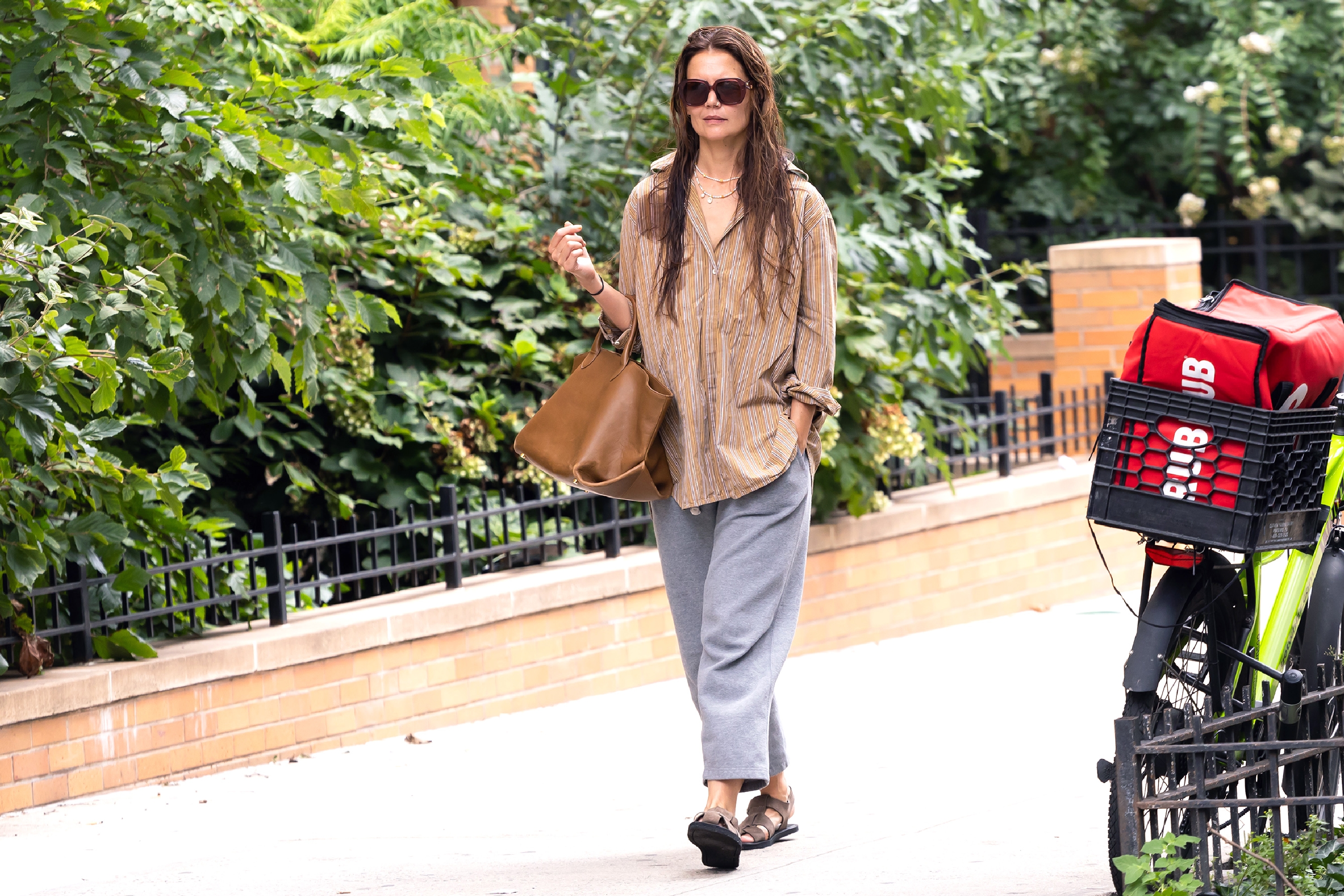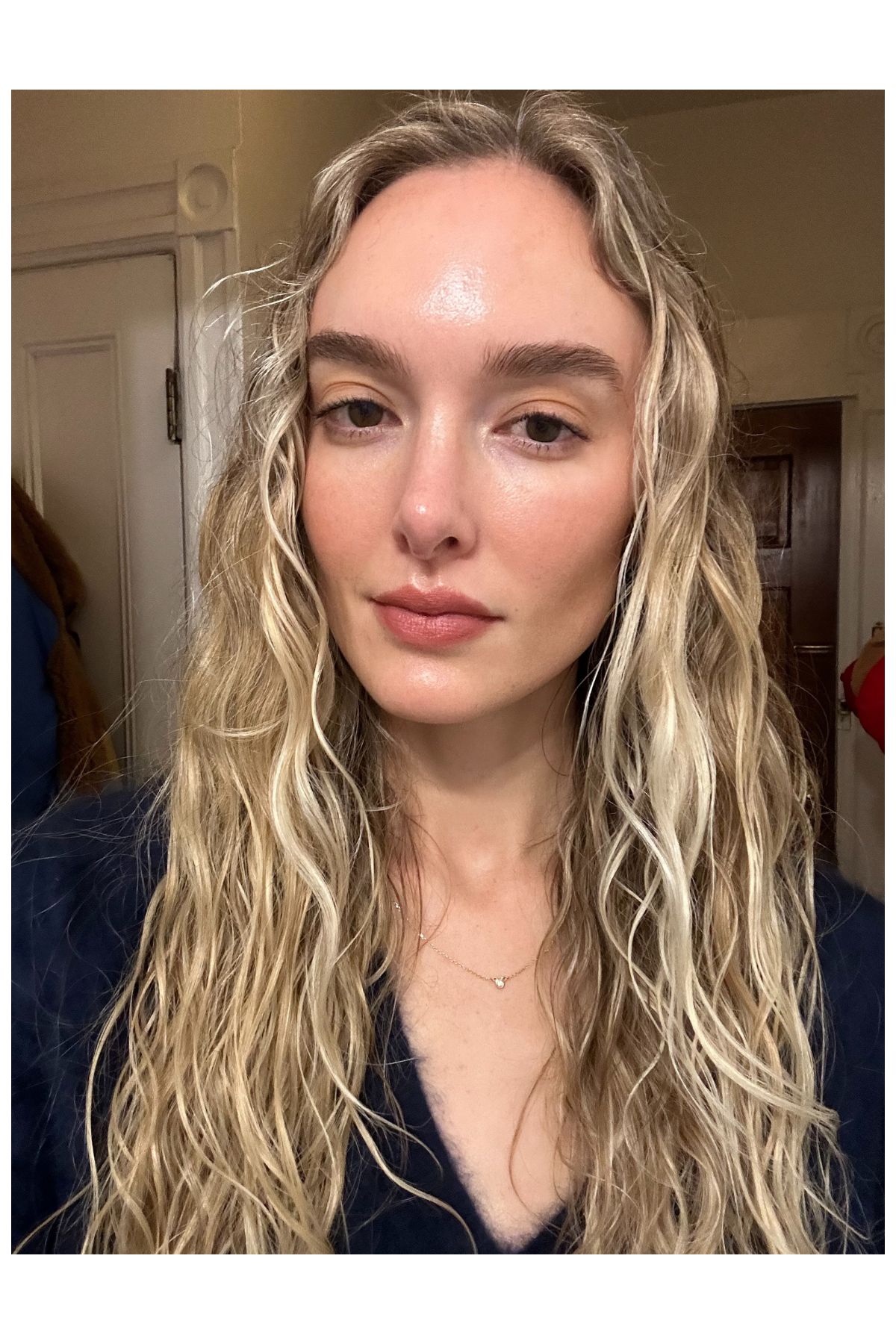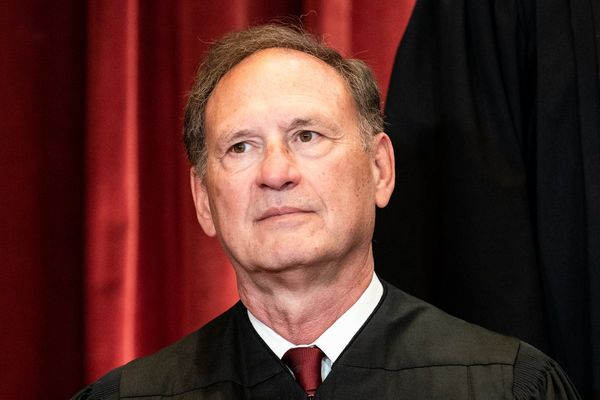
"Twice this week I've been in meetings with people showing up on camera with wet hair," Marie Claire's Executive Editor Andrea Stanley wrote to me recently over Slack. "This used to be taboo. Is it not anymore? Is it fine to wear wet hair anywhere?"
Oh no, I thought worriedly, realizing that I, quite literally, arrived to a breakfast meeting this week with just-out-of-the-shower hair dripping down my back. That sounds more dramatic than it looked, I swear. I do this all the time. But with all the hoopla around prioritizing hair health—which includes not going to bed with wet hair since it's more susceptible to damage or using too much heat—I don't really understand what the alternative is to leaving the house with a damp head. Scratch that, I do, actually: It's yanking day-three hair up into yet another bun or ponytail to disguise the greasy roots. That can only go on for so long, people! What am I supposed to do, wake up at 6am to shower and towel dry my rib-skimming hair all morning until I hop on the train and pray I'm fulled dried by the time I swipe my keycard in the elevator? Hard pass.
I'm hardly the only one who's been caught in the shower etiquette crosshairs. Specifically, leaving home (or logging onto a Zoom meeting) with hair still wet from the shower. Is it a blatant sign of unprofessionalism? Or can it simply be...air dried hair at its earliest stage?

For context, I am a long-time devotee of heat-free drying. I'd love to tell you that it's because my hair health is at the top of my beauty priority list. Alas, that's not the reason. I am simply too lazy to spend the 10-15 minutes on my 2B waves with a dryer and a diffuser. It's not lost on me that my natural texture is well-suited for the air dry life, nor do I really care about the fine halo of frizz that accompanies my post-shower hair. I lost that battle long ago, and after 35 years, I only add in a smoothing cream when I have somewhere particularly important to be. (Not that my work isn't important—please don't fire me!)
Basically, I'm at peace with how my hair looks when I add in my trio of haircare products to hydrate and define my texture (leave-in conditioner, air dry gel, and a curl serum) and then go about my business. That equates to me arriving at most morning events or meetings with my hair still damp (if not sopping wet) from the shower.
I know a lot of people who have since joined me on the wet hair train after the pandemic forced many of us to work from home. It seemed superfluous to blow dry when we were living in an endless loop of bed, bathroom, couch, kitchen, repeat. Air drying became the default, and Zoom meetings were replete with more than a few wet heads of hair throughout the week. Five years later, it seems that I'm not the only one who's reluctant to give up on my wash-and-go routine, and for some people, that might feel like an issue.

The bigger question is, where do we draw the line in terms of what we deem "professional" hair and "unprofessional"? Who gets to decide? Hair, like every aspect of beauty, is inherently divisive. It's the reason why we're still fighting for more textured hair education in America in 2025, and only 27 states have passed the Crown Act to eliminate discrimination based on hair texture or hairstyle, especially for people of color. Not to mention that, historically, it's a lot of white, heterosexual males at the top of the corporate ladder and leading a good portion of other industries that employ women. They have been making the rules around hair and presentation for a long time.
Call me crazy, but I don't typically take my beauty advice from a guy who has only marginally interacted with haircare, or skincare, or makeup and nails. Wet hair on a man (which is typically close-cropped) is not comparable to wet hair on someone who identifies as a woman, and who usually (but not always) has a more robust beauty routine (and typically longer hair that takes a while to dry).
The rules of hair decorum—whether wearing your hair wet or in a braided protective style, among other natural hair looks—have been written by a demographic that, traditionally, does not require the same amount of care and effort to style their hair. So why wouldn't they think my showing up to a meeting with undried waves is a sign of negligence in my appearance? The reality is, for myself and many other lazy, or heat-resistant, or rushed people, that's just how we're styling our hair that day, nothing more, nothing less. I swear it's not a marker of subpar performance or flagrant unprofessionalism. If you don't like it...just give it an hour or two to dry.







